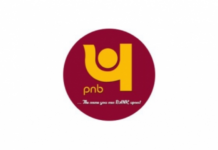Chennai– Global credit rating agency Fitch Ratings on Tuesday said it has revised its outlook for Indian banking sector to “Negative” from “Stable” over mounting non-performing loans (NPL).
The rating agency has downgraded the Viability Ratings of Canara Bank and IDBI Bank by one notch to “bb’ and “bb-” respectively.
According to Fitch Ratings, the revision implies that there are more downside risks for bank Viability Ratings unless the risks of deteriorating asset quality and weak earnings are counterbalanced by sizeable capital infusions.
“Banking sector NPLs rose sharply in the financial year ended 31 March 2016 (FY16) as a result of stricter NPL recognition standards. Asset quality could deteriorate further over the next 12-18 months given the banks’ exposure to stressed sectors, such as infrastructure and iron and steel, and the difficult resolution process for stressed assets in the near term,” it said.
“Earnings for the sector are also likely to be weak due to muted loan growth and high credit costs,” the credit rating agency added.
However Fitch Ratings has affirmed the Long-Term Issuer Default Ratings (IDR) of Canara Bank and IDBI Bank and seven other Indian banks viz., State Bank of India (SBI), Bank of Baroda, Bank of Baroda (New Zealand) Limited (BoB NZ), Punjab National Bank (PNB), ICICI Bank Ltd. and Axis Bank Ltd at “BBB-“.
The Indian Bank’s IDR has been affirmed at “BB+”.
According to Fitch Ratings, the outlook on the IDRs is “Stable”.
Fitch Ratings said Indian banks’ capital positions have historically been weak, the situation has worsened for most public-sector banks due to delayed recognition of problem assets and high loan-loss provisions, and will remain weak in the near term unless the government makes significant capital investment in the banks.
Though the government is committed to inject $7 bn of capital in public-sector banks by FY19, out of a budgeted investment of $11 bn, but Fitch says the government or other related entities are likely to have to inject more funds because it estimates the banking system needs around $90 bn of capital while many public-sector banks are likely to find it difficult to access new capital from other sources.
Resolving both the asset quality and capital questions are important conditions for some banks to regain market access. The VRs could come under more pressure if the banks’ capital levels are not addressed.
The asset-quality and capital pressures on the system in the near term drive Fitch’s negative sector outlook, but the Reserve Bank of India’s reforms of the banking sector are likely to be positive over the long term.
If fully implemented, the reforms should lead to better lending practices, earlier recognition of problem exposures, improved creditor rights, greater transparency, and a better capitalised and more competitive banking system, the rating agency said. (IANS)






